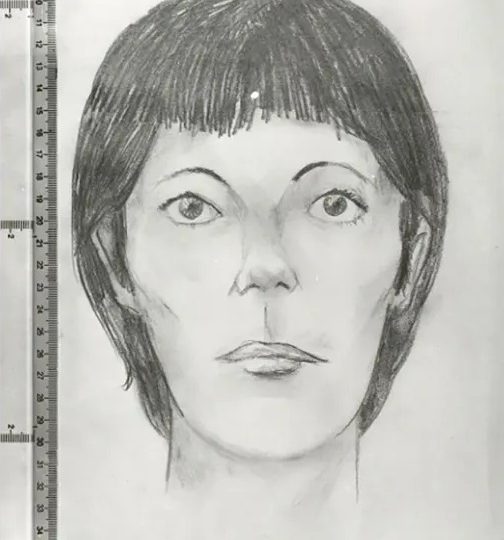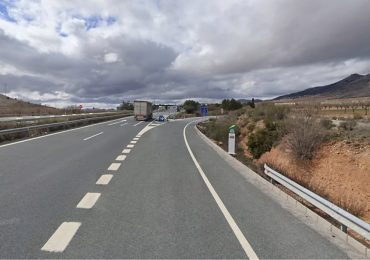RED shoes and a 10p coin are among the tragic clues that could reveal the identity of a teenage girl murdered 40 years ago.
The girl is among 46 cold cases Interpol is trying to crack with the help of the public as part of Operation Identify Me.
A sketch of the victim who was found dead in France in 1982Interpol
InterpolThe red Bata-brand shoes she was wearing[/caption]
InterpolThe 10p coin the victim was carrying[/caption]
She was wearing blue jeans and a white ruffled shirtInterpol
The girl was also wearing this necklaceInterpol
Interpol has issued ‘Black Notices’ for each amid a campaign to try and identify women murdered across Europe in the late 20th century.
It comes after a British woman was finally identified more than 30 years after she was killed in Belgium thanks to a similar campaign.
Now Interpol has shared details of a case dubbed “The girl with the 10-pence coin”.
The girl was found dead on the side of the D723 motorway in Le Cellier, northeast France, on November 25, 1982.
She was found with a 10p coin – leading investigators to believe she was either from the UK or had been travelling through Britain.
The youngster, believed to be as young as 16, was wearing red Bata-brand shoes, blue jeans and a white ruffled shirt.
She was also wearing several pieces of jewellery including a gold-coloured metal chain with a brown wooden bowling-pin-shaped pendant.
They were often worn by conscripts who had completed their military service.
The girl was also wearing a black leather chocker with five beads, four metal bracelets and a metal keyring in the shape of Napoleon.
As well as the 10p, Taxiphone telephone token and a small box of matches with no lid were found with her.
Investigators believe the victim – described as a white female who was 5ft 5ins with brown hair – was killed between June and September of 1982.
Having been found dumped in a layby months later, her body was found “in a state of skeletonisation”.
It meant police could not see what colour her eyes were, or whether she had any distinctive tattoos, birthmarks or scars.
French detective Franc Dannerolle, speaking to the BBC near where she was found, said her body was “disposed of like garbage”.
He said: “There was no respect, no care for her before her death.”
Police have declined to share details about how she was killed as they want to avoid “fake perpetrators” claiming responsibility.
The teen’s remains can no longer be found in a complication to the probe.
Dannerolle added: “If we manage to find them, it could be possible to work on her DNA to have a link with the family.”
What is an Interpol Black Notice?
INTERPOL issues Black Notices to seek information on unidentified bodies.
Last year, it published 282.
In May 2023, Interpol launched its Identify Me appeal to identify 22 women – sparking 1,800 tips from the public.
It has now been expanded to include additional cold cases from Belgium, Germany, and the Netherlands, as well as cases from new participating countries France, Italy, and Spain.
A Black Notice alert has been issued for each of the unknown women.
These alerts are usually intended for police only. But Identify Me is the first time Interpol has publicly released extracts from Black Notices.
Interpol’s website says: “Black Notices can include information on the location where the body was found, biometric information (DNA, fingerprints, facial images), dental charts, physical descriptions of the body or clothing, and any other details relevant to identifying the deceased.”
Retired detective Alain Brillet, who worked on the case at the time, described the case as a “triple enigma”.
He said: “The strangest and most incredible thing was that we had someone who had been murdered, because we knew she had been murdered, but we could never find out what her name was, where she was from, or who had killed her.”
It comes after Brit Rita Roberts was last year identified more than three decades after her murder.
She was recognised thanks to her distinctive flower tattoo.
The British expat, 31, was found on June 3 1992 in a river in Antwerp. She had been violently killed.
Her family said learning the news of what had happened to her years later was “shocking and heartbreaking”.
Rita’s sister-in-law Paulette Roberts shared a post on Facebook that read: “Today, we come together as a family to share both a heartbreaking and hopeful story that has deeply impacted us.
“My sister-in-law has recently found our sister, Rita Roberts, after an agonising 31-year search.
“However, the joy of this reunion is marred by the tragic news of Rita’s untimely and senseless murder in Belgium.
“As Donna and my husband grapple with the pain of losing Rita, we are also compelled to raise awareness about 21 other unidentified women who, like Rita once was, are waiting to be recognised and reunited with their families.
“Rita passionately loved her family and will be greatly missed.”
Leave a comment








